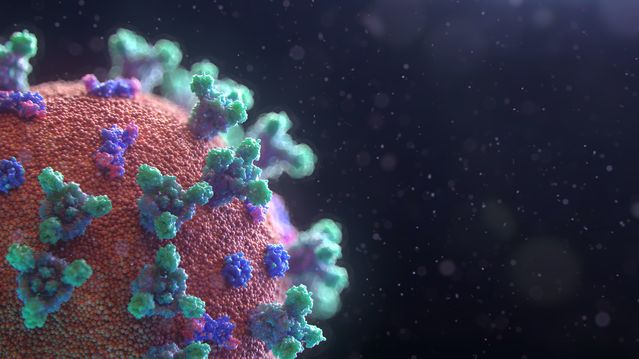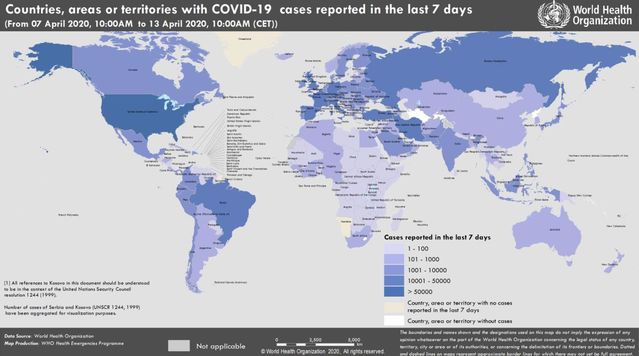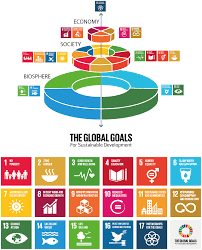Coronavirus Disease 2019
Coronavirus Unmasks Global Inequalities
Planet Earth remains on life support.
Posted April 12, 2020 Reviewed by Ekua Hagan
Pope Francis likened the recent pandemic to “recent fires and floods,” a natural response to the world’s ambivalent reaction to climate change. He said, “There is an expression in Spanish: ‘God always forgives, we forgive sometimes, but nature never forgives.”[1]
We are living through a global health crisis—a pandemic the likes of which we haven’t seen in more than 100 years. The Spanish Flu in 1918 took an estimated 50 million lives worldwide and about 675,000 in the United States, during the same period as WWI, when the world had retreated from a global turning point into worldwide conflict.[2]
WWI led to the formation of the ill-fated League of Nations, and within 20 years the world witnessed another global conflict, WWII. As a result, the United Nations (UN) was founded 75 years ago to end all wars and genocide. While the UN has avoided world wars, it has been unable to totally put an end to genocide; and it has not fully bridged the great social and economic divide that still plagues the human world.

The British Medical Journal (BMJ) has appropriately coined the term the “COVID phenomenon,” which is any "occurrence" that significantly impacts on virtually all "Aspects of Human Existence and Development."[3] This is what French anthropologists Marcel Mauss termed a “total social fact”; and contemporary medical anthropologists, such as Byron Good, Paul Farmer, and Arthur Kleinman, trace our response to such pandemics back to the “cultural models” that permeate the whole of society and institutions.[4]

Unlike anything we’ve seen in the 75-year history of the UN, the COVID phenomenon has ripped the masks off the neo-liberal regime of the post-Cold War era. This pandemic has shown the depth of human, economic, and social suffering, the malaise of our global age and the insidiousness of our fluid identities. By attacking the very heart of global capitalism, the metro areas, the densely populated hubs of global markets, technology, trade, and diverse work-force, ironically, the pandemic has given the earth's biosphere some life-support.
With the onset of space travel, humans began to see the earth as one unified entity from the NASA satellites, a "living and breathing" planet as suggested by the “Gaia Principle”[5]; on the 50th anniversary of Apollo-13, we may remember we have solved these global challenges before.

The Sustainable Development Goals, as a template for a forward-looking mindset, offers a useful check-list. We have a long way to go towards meeting the global goals by 2030 to heal the planet, according to the Gates Foundation and many other philanthropic organizations.
SDG 1: No Poverty: Poorer communities with lack of adequate resources to stay safe indoors and without the ability to get protective gear or masks will be most vulnerable. Income is the great predictor of existing poor economic conditions, which will predispose the underserved, destitute, migrant, and laborers. Similarly, urban slums, refugees, and other marginalized communities may face higher mortality. Half a billion more people may be pushed into poverty due to the global pandemic.[6]
SDG 2: Zero Hunger: Hunger will be sharpest in the areas of the country or the world that cannot afford fresh foods, produce, delivery of services, or suffer from food deserts. Under normal conditions, marginalized populations don’t have access to healthy food supplies and feel acute food insecurity. This trend will be worsened by the virus, especially, as people-people services are cut short due to the lockdown and curfew. Reports suggest the Navajo Nation fears hunger will be acute as lockdown remains in effect.[7] Food banks and soup kitchens will also feel the crunch of the limited supplies[8]; non-profit organizations will have to make extra efforts to obtain and store excess supplies and for a longer duration.
SDG 3: Good Health and Well-Being: Disparities in healthcare systems are the starkest due to the virus. Poor communities in urban areas – consisting of minority populations, African American, Hispanic Americans, and new immigrants – have already suffered greater rates of mortality.[9] In the developing world, such disparities will be abysmal.
SDG 4: Quality Education: Schooling outcomes are worse in poorer communities. Due to school closures, poorer schools in inner cities and rural areas have lost valuable time this year impeded by the lack of virtual classrooms and online tools for educating their students.
Many students may not have access to technology to log in from home or their home life may be disruptive. These children who rely on the structure of the school day to bring balance to their daily life and two balanced meals may lose a semester or half a year of schooling due to the virus.
“As schools shutter in the wake of the COVID-19 pandemic ... This grievous situation is a reminder that we must build future-proof infrastructure that democratizes broadband and provides internet access to all Americans, regardless of where they live.”[10] The same conditions can be multiplied to many parts of the world.
SDG 5: Gender Equality: Men are at the forefront of COVID-19, especially in urban and poor segments of the metropolitan area of the US, based on the latest data revealed by the CDC. This early trend is evident in the data from 14 US states; we can see similar trends in China, Italy and South Korea.[11] It may be men don't get tested earlier than women, stay asymptomatic for longer, and thus suffer higher mortality rates. More data is needed here to fully understand the gender imbalance and how to protect women, who are also on the front-line as doctors, nurses, and healthcare workers.
SDG 6: Clean Water and Sanitation: Water is essential for maintaining good hygiene and healthy living. Poor slums and low income communities without regular running water will find it hard to fight off this virus as the risks of mortality spread through community transmission. Universal access to clean water and sanitation is essential for the developmental agenda, a goal we are still striving to achieve.

“Today, a global pandemic brings into focus how important water is to our lives and to public health …Along with placing travel restrictions and encouraging social distancing, healthcare officials have stated over and over again that washing your hands is the most important step to manage the spread of the virus.”[12]
SDG 7: Affordable and Clean Energy: Poorer societies and communities in the developed world, emerging world, and underdeveloped world using dirty fuels will be adversely impacted by the COVID-19. Recent study notes that the tiniest bit of air pollution can make COVID-19 more deadly. “Scientists have found that people who lived in US counties with elevated levels of fine particulate matter known as PM 2.5 in the air were more likely to die from the virus.”[13]
SDG 8: Decent Work and Economic Growth: Millions are out of work due to the shutdown, especially, the low-paid workers in the service economy. As the global economy grinds to a halt, we will lose almost one percent of the global output due to the COVID-19 pandemic. If further contractions do not respond to fiscal stimulus, fail to support income, and consumer spending, according to UNDESA, the world will face a global recession similar to the housing crash of 2008 or the downturn we witnessed after 9/11. [14]
SDG 9: Industry, Innovation, and Infrastructure: Countries with poor infrastructure, especially poor healthcare services and delivery systems, may not fare as well. The societies in the global south, even in the BRICS economies, will lose millions of lives due to a lack of basic healthcare. Societies with innovative pharma and biotech sectors will bounce back quickly, with better testing, treatments, and vaccinations. Richer Asian economies and parts of Europe have already shown better trend lines, while the rest of the world is lagging.[15]
SDG 10: Reduced Inequalities: Countries with large economic, social, and cultural inequalities, with an elite, super-rich class versus a large, extremely poor underclass, will not be able to protect their poor and the working classes; front-line workers, migrants, laborers, janitors, sweepers, and seasonal workers, who are providing the essential services to keep the society from total collapse will be overexposed. For example, the large number of migrant urban workers have been fleeing cities in India to their native villages without any healthcare or social services. [16]
SDG 11: Sustainable Cities and Communities: Urban areas with high-density populations, urban living conditions, and open wet markets will be impacted for a long time after COVID-19. Open access to urban city centers will have to be restricted and monitored. Public transportation systems will have to be fortified. Most urban areas will rely on an alternative to public transportation systems. Finally, some of the personal and tracking data will have to be openly shared to monitor public health concerns. [17]
SDG 12: Responsible Consumption and Production: As the global supply chain is adversely impacted, we might be more responsible as shoppers and buyers of consumer products and goods. Physically interactive consumption may shift to physically disjointed modes of production and consumption, which are perhaps healthier and better for the planet.[18]
SDG 13: Climate Action: Complete shut-downs are better for the local geography, reducing CO2 pollution and other forms of environmental degradation. No air travel and stay-at-home orders worldwide will create improved air quality, cleaner air, and massively reduce emissions.

We can finally see the peaks of the Himalayas from the base camp, from Kathmandu, Nepal, and as far as Punjab, Northern India.[19] Wow! But will this impact climate action long-term? Probably not.[20]
SDG 14: Life Below Water: Ocean’s surfaces may get a break from cruise ships and sea liners that have been carriers of the pollution and viruses for decades. The CDC has shut down all non-essential sea travel.[21] Mitigation measures to fight the virus will have implications for better aquatic health and for life below water.[22] It will certainly impact the “blue economy,” but will it abate the penetration of plastic straws and other human garbage into the bodies of sea creatures? Probably not.
As a Cornell marine ecologist recently said, “Nature is taking a breath when the rest of us are holding ours.”[23]
SDG 15: Life on Land: At long last, planet Earth may get a long-deserved break. Pandemic interventions will be protective of the environment.
Shout out to Greta Thunberg, the teenager who has been trying to save the planet: "Nature has granted your wish!"[24] For now.
SDG 16: Peace, Justice, and Strong Institutions: Less crime, less hostilities, and peace or justice may be forged on the planet, albeit for a short while. The pandemic has forced world peace and the UN called for a global ceasefire around the hot-spots in the world.[25]
SDG 17: Partnership for the Global Goals: We are all in this together. COVID phenomenon is a “total social fact” driven by entrenched inequalities in an increasingly interconnected planet, and interventions have to be global collaborations and partnerships between governments, private sectors, NGOs, civil society, and individuals involved in charitable donations and relief work. The public response to printing 3D protective masks demonstrates how we can all respond to the challenge. [26]
Finally, whether you believe in Lovelock’s Gaia hypothesis or not[27], the scientific data generated from the impact of the COVID phenomenon on the earth’s biosphere, as a pre- and post-natural design, will keep scientists busy for a long time towards proving their theories about sustainability, human development, and pandemics.
References
[1] https://www.thetablet.co.uk/features/2/17845/pope-francis-says-pandemic…-
[2] https://www.cdc.gov/flu/pandemic-resources/1918-pandemic-h1n1.html
[3] https://www.bmj.com/content/368/bmj.m1199/rr-17
[4] Farmer, P. Infections and inequalities: the modern plague. Berkeley, CA: U of C Press; https://www.ucpress.edu/book/9780520229136/infections-and-inequalities
[5] https://theconversation.com/scientists-finally-have-an-explanation-for-…
[6] https://www.oxfamamerica.org/press/half-billion-people-could-be-pushed-…; also see The Gates Foundation report on extreme poverty; https://www.npr.org/sections/goatsandsoda/2019/09/17/761548939/gates-fo…
[7] https://www.aljazeera.com/news/2020/04/navajo-nation-fears-hunger-covid…
[8] https://www.newsday.com/news/health/coronavirus/covid-19-food-nonprofit…
[9] https://www.cdc.gov/mmwr/volumes/69/wr/mm6915e3.htm?s_cid=mm6915e3_w
[10] https://ruralinnovation.us/covid-19-school-closures-visualizing-broadba…
[11] https://www.statnews.com/2020/04/09/hospitalized-covid-19-patients-diff…
[12] https://www.commondreams.org/views/2020/03/29/fighting-covid-19-starts-…
[13] https://grist.org/justice/study-even-the-tiniest-amount-of-air-pollutio…
[14] https://www.un.org/sustainabledevelopment/blog/2020/04/covid-19-likely-…
[15] https://www.weforum.org/agenda/2020/04/digital-infrastructure-public-he…
[16] https://www.ft.com/content/10d8f5e8-74eb-11ea-95fe-fcd274e920ca?shareTy…
[17] https://www.wri.org/blog/2020/03/covid-19-could-affect-cities-years-her…
[18] https://www.project-syndicate.org/commentary/covid19-great-economic-mis…
[19] https://www.snopes.com/fact-check/himalayas-visible-india-30-years/
[20] http://www.rfi.fr/en/international/20200403-covid-19-biggest-drop-in-co…
[21] https://wwwnc.cdc.gov/travel/notices/warning/coronavirus-cruise-ship
[22] https://www.csis.org/analysis/covid-19-sea-impacts-blue-economy-ocean-h…
[23] https://www.theatlantic.com/science/archive/2020/04/coronavirus-pandemi…
[24] https://www.newscientist.com/article/2238831-greta-we-must-fight-the-cl…
[25] https://news.un.org/en/story/2020/04/1061422
[26] https://3dprint.nih.gov/collections/covid-19-response
[27] https://courses.seas.harvard.edu/climate/eli/Courses/EPS281r/Sources/Ga…




